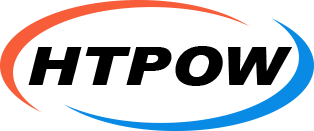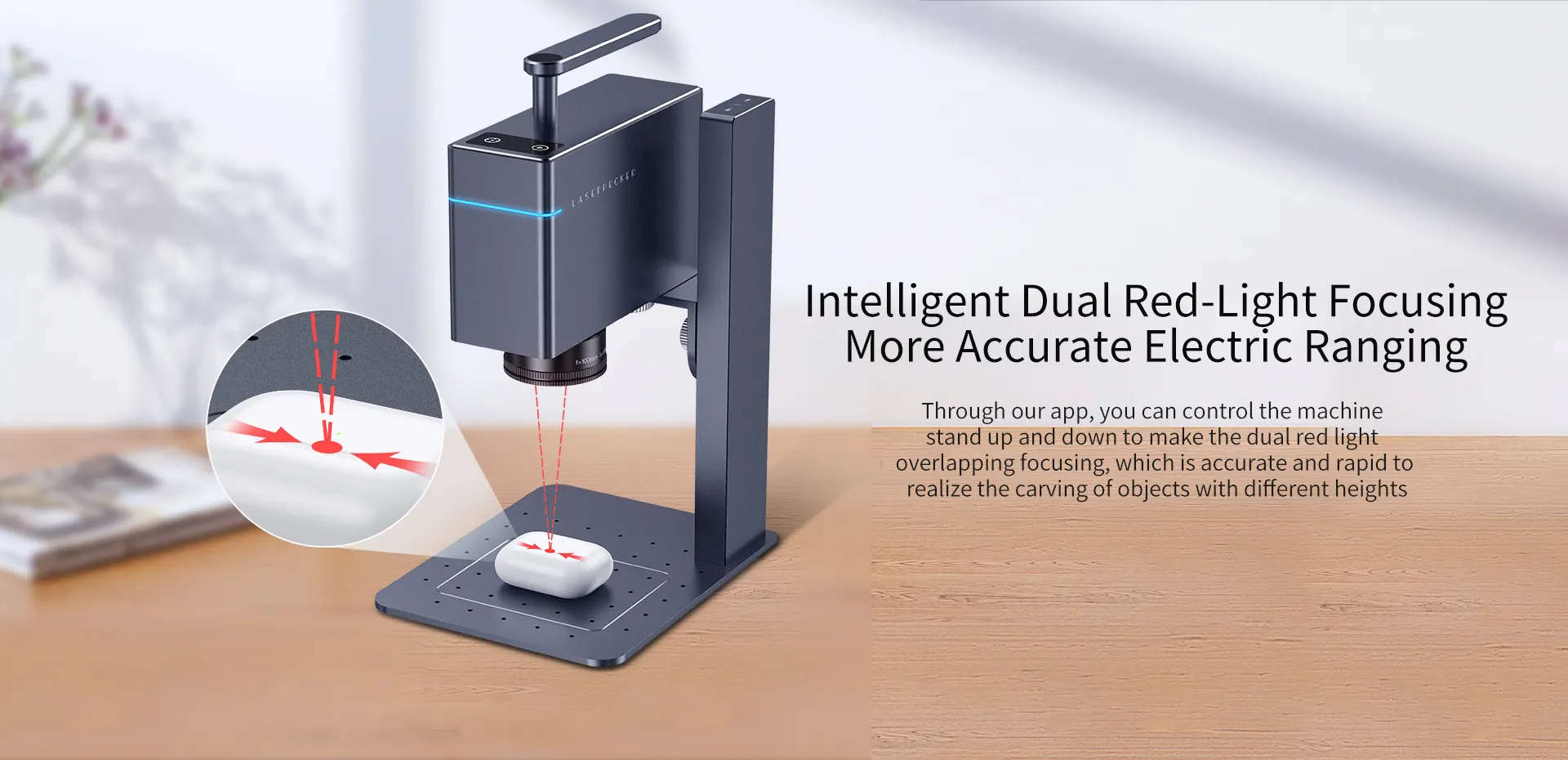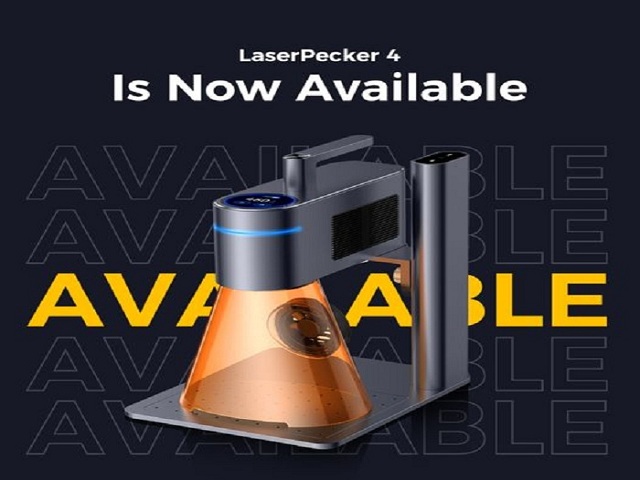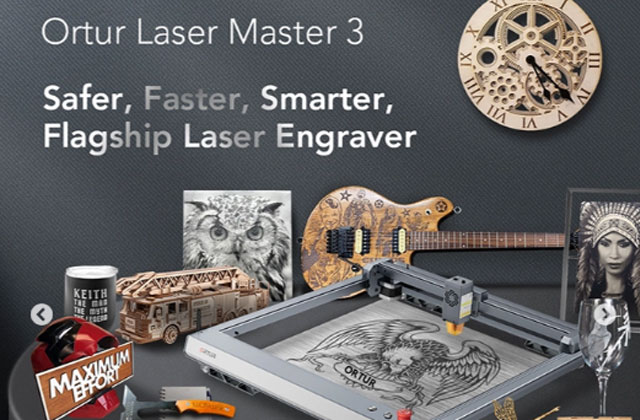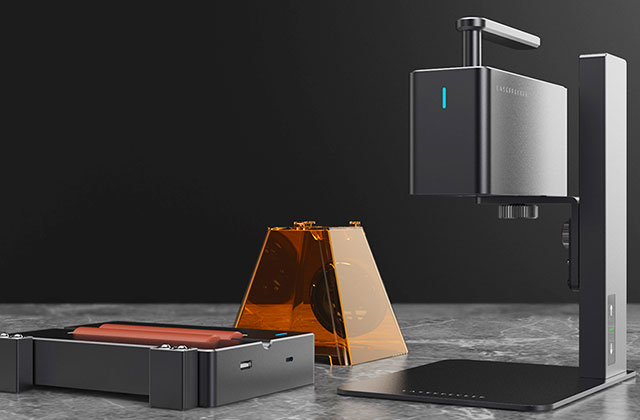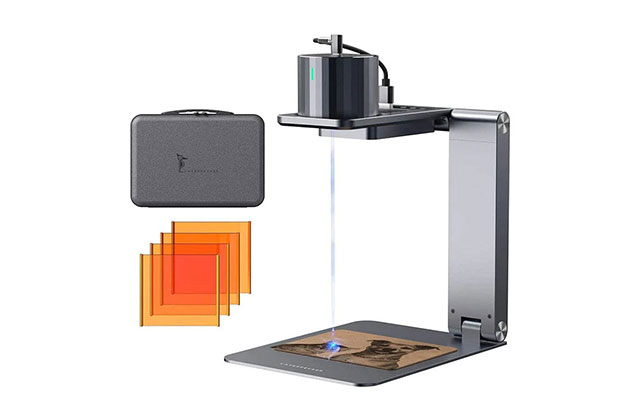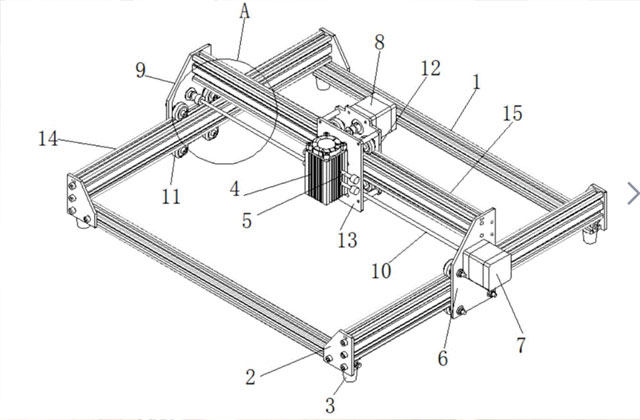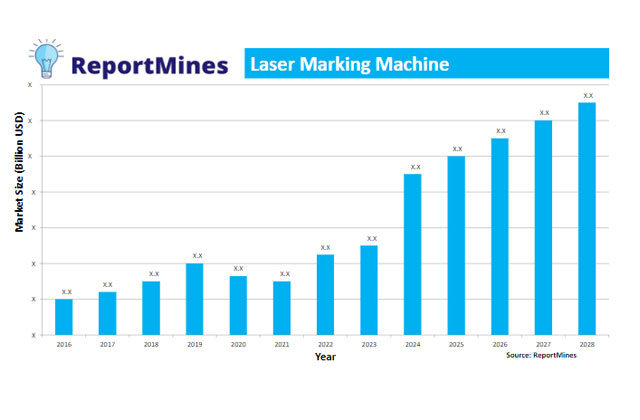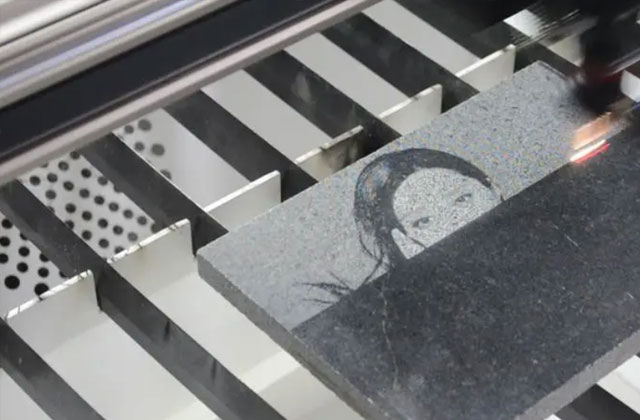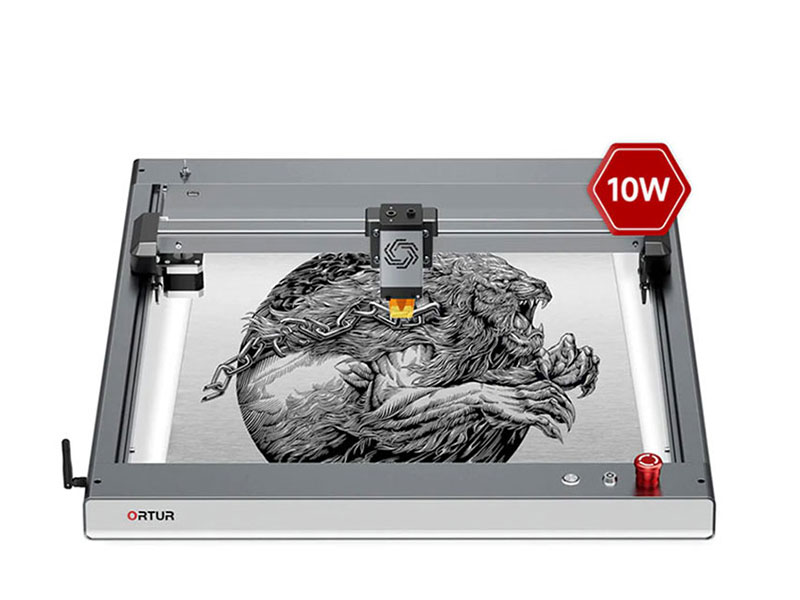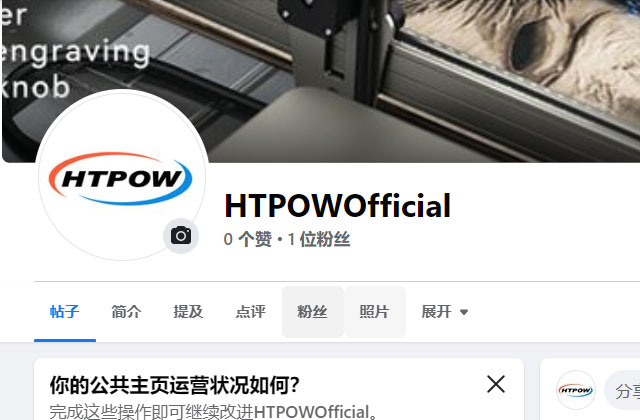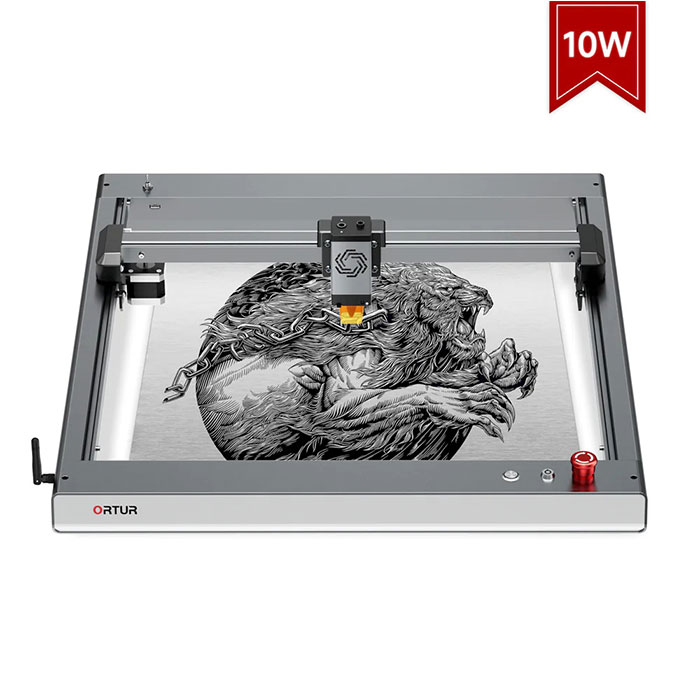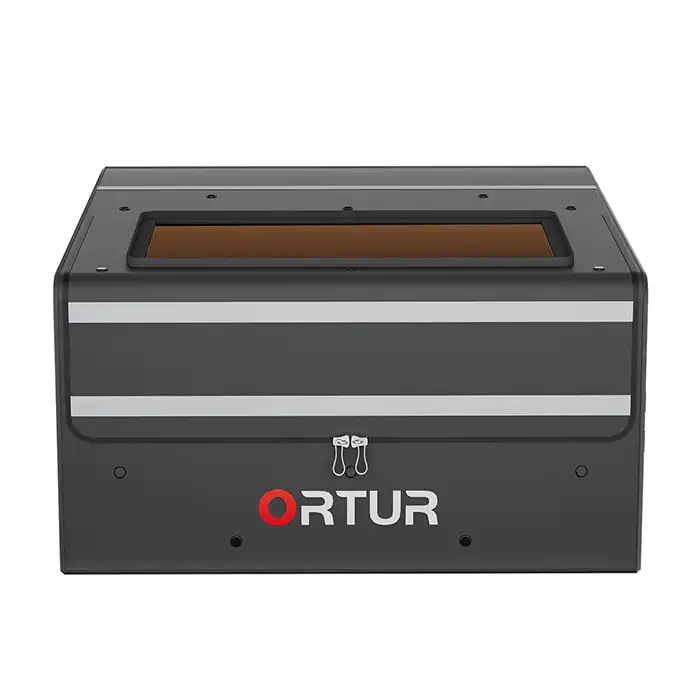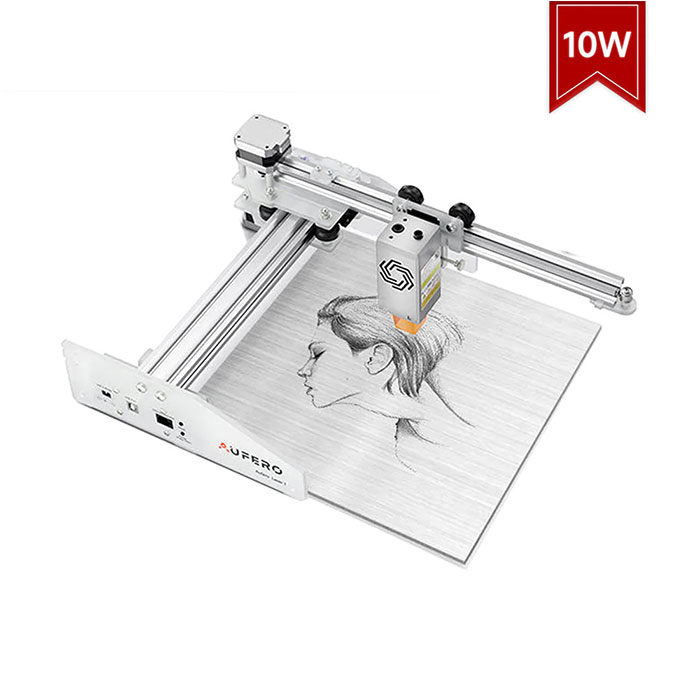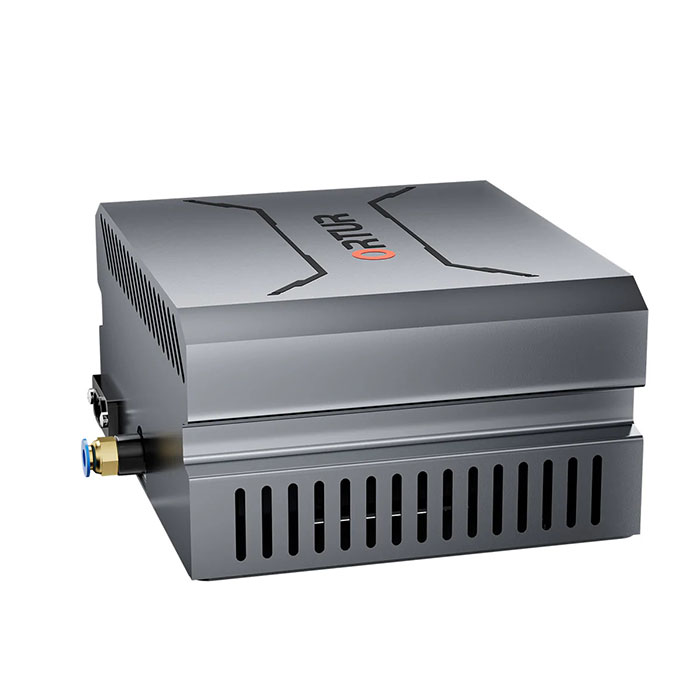Laser engravers have impacted many industries over the years, but technology continues to improve, making it easier for industries to harness the power of light to achieve clean engraved lines.
In this article, HTPOW will let you know everything about fiber laser engraving machines, from how they work to the materials they can engrave.
What is a Fiber Laser Engraver?
Fiber laser engraver are tools used by craftsmen across multiple industries, proving their worth by engraving smooth lines that can be programmed into intricate designs. (1) Fiber laser engravers are most widely used by individuals working with metal or plastic, and if you choose the LaserPecker 3 you will find that the LaserPecker 3 engraver is suitable for engraving most organic materials such as wood, leather or glass.
The word "laser" itself is an acronym that will give you an idea of how it works: Light Amplification by Stimulated Emission of Radiation. Like a hand mirror in sunlight, this engraver absorbs light from a fiber optic cable and converts it into a heated beam that pinpoints every target point on your design to create intricate, smooth engravings.Of course you also maliciously choose LaserPecker 2 as your creative tool.
Different Types of Fiber Lasers
There is no fixed way to classify the different types of fiber lasers. One can choose different fibers based on their core size or their mode of operation.
Different modes of operation change how the laser beam is delivered. For example, continuous wave fiber lasers send a continuous laser beam through the machine, while pulsed fiber lasers, gain-switched or q-switched lasers can deliver pulsed beams of varying power and repetition.
The core size determines the amount of light in the machine fiber. Single-mode fiber lasers provide a smaller, more focused beam with an average width of 8.5 microns. Their counterparts, multimode fiber lasers, produce wider beams averaging 75 microns wide.
Single-mode fiber lasers are often preferred because they focus the beam more efficiently for better engraving quality, while larger beams can engrave larger areas faster, resulting in faster engraving times.
Another potential category is laser power, which determines how hard and how fast the laser can engrave material. These routers typically come in retail increments of 20W, 30W, 50W and most recently 100W machines.
What is the purpose of fiber laser engraving machine?
Fiber laser engravers are commonly used to engrave names, sayings, and quotes on metal pieces. These engravers can be used to create placards, or to carve jewelry such as wedding rings and friendship necklaces.
Engraving ownership or branding information into electronics or other small items like metal tags and bands is also a common use, so companies can make branded merchandise.
Opaque materials like metal and plastic or carbon fiber are the best materials for these engravers because the laser consists entirely of concentrated light. These lasers can engrave any type or shape of metal—round, flat, or concave—as long as it fits securely beneath the laser head.
During your research, you may have come across another laser cutting tool, the CO2 laser. Depending on which laser engraver you tend to use, it's important to see how the two compare. For a full in-depth detailed article on what materials they can cut, how fast, how much they cost, and more, click on the Fiber-to-CO2 Lasers Finish This Engraver link!
How to use fiber laser engraving machine
Working with a fiber laser engraver is not a difficult task, but it should be approached with caution. Like any other type of CNC machine or router, it should not be operated under the influence and should only be used by trained personnel over the age of 18.
Improper operation of fiber laser engraving machine may endanger your health. You should always wear appropriate clothing and glasses, and keep any loose objects, such as hair or jewelry, away from the machine during operation.
Every fiber laser engraving machine should be operated according to the user manual provided by the manufacturer. Procedures may vary by model, manufacturer, and wattage.
In most cases, several steps should be taken to avoid injury or unnecessary wear to the machine before and after operation:
1. Check that the machine is properly maintained
2. Turn on the machine and allow it to power on normally
3. Set the material and operate the router carefully
4. Shut down the machine and allow it to de-energize gracefully
5. Unplug and check for proper maintenance of the machine
These basic steps will keep the machine running safely, avoiding injury to personnel, and ensuring that the machine is used for as long as possible.
How does fiber laser technology work?
Fiber laser engraving machines contain a complex series of technological marvels that enable fiber optic cables to refract as much light as possible into a carefully directed, concentrated beam.
The engraving machine is divided into three parts: pump, resonator and beam. These three parts are vital for any operator if you want to understand the basic inner workings of the machine.
pump module
In the pump module, the laser beam starts its life cycle. Here, laser diodes are embedded in the machine and emit light.
Once emitted, light must travel. This light travels through the fiber optic cable, generating powerful energy as it travels through the resonator module, until it finally reaches the beam output, which becomes visible to the operator as they engrave the material.
Resonator Module
The resonator module is designed exclusively to excite the light from the pump module and enhance the output.
From the laser diode, light enters through a fully reflective Bragg grating, then enters the gain medium, and finally passes through a semi-reflective Bragg grating.
In the gain medium, it is excited by an extra photon that bounces back and forth between the mirrors, creating a buildup of energy in the wire.
Once the excitation light reaches a specific wavelength, it is released through the half-mirror and enters the beam module.
beam module
The beam module is the final step in the process. Here, this section may vary based on your customizations. However, with a standard fiber laser engraver, the process is fairly straightforward.
The excitation light with a specified wavelength passes through the half mirror in the resonator module and then enters the transmission fiber. From this delivery fiber it enters the laser head, which focuses the light into a beam capable of engraving the material on the surface beneath it.
What can fiber laser engrave?
A fiber laser is not suitable for several types of organic materials because the beam it delivers may pass through them or fail to engrave at all.
At least in the case of glass, the beam goes straight through the clear polymer and starts carving the table below. The only way to fix this is to use a different engraver that is more suitable for the glass or to add pigments to the glass so that light cannot penetrate the material.
One popular use for fiber laser engraving is jewelry, which has dramatically changed the industry. (2)
"One of the fastest growing technologies is the use of laser systems in jewelry making to replace existing traditional metal welding, engraving and cutting methods."
• Entrepreneur
Now, with this laser technology, jewelers can engrave, cut and weld metal with greater precision and cleaner lines.
Materials best suited for fiber laser engraving include nickel, brass, aluminum, stainless steel, metallized ceramic or steel. Plastics are also on the list of polymers that can be successfully etched with this type of engraver.
Choosing a Fiber Laser Engraver
Before choosing a fiber laser engraver, consider your needs for the machine. How much material do you want to engrave and does it matter how long each piece takes?
Depending on the work environment, size may also be a factor to consider. If you're working in a home studio, a portable machine will give you the best range of options in the least amount of space. However, for larger companies with dedicated workspaces, it is ideal to have an entire space and an enclosure for machines to provide a safer working environment for operators.
Depending on the manufacturer, you'll get different options to sort through. Fortunately, if you ask, manufacturers are usually willing to provide additional parts or customization according to your needs.
How much laser power do you need?
20W laser engravers are best for shallow marking and designing, but are not commonly used for deep engraving or cutting. This wattage is also best for items that are engraved infrequently, as they can take a while to finish as they are not time sensitive.
The next step up is the 30W engraver, which can deliver even better results for only a small price increase. The machine is still good for lighter marks and designs, but engraves lines faster and sharper. It is common for individuals and companies to choose 30W machines for frequent or time-sensitive use.
50W machines are standard for harder materials because the stronger wattage allows the beam to focus better and penetrate harder metals than lower wattages. The machine can also make some cuts on thinner materials. Although these machines are better than 30W, individual purchases are not common due to the higher price.
If you plan to use the machine a lot, it may be worth choosing a 30W or 50W machine if you are looking for a more time-efficient cut with the same or better accuracy.
100W machines are not common in the market because they are relatively new compared to others, but they are carved deeper and can meet some special requirements.
What can you engrave with a 20W fiber laser?
The 20W Fiber Laser Engraver is a powerful machine that can engrave almost any kind of luxury vanity material from marble and gold to aluminum and ceramic tile. 20W fiber laser is the most popular and cost-effective metal engraving machine.
Since every step up in wattage costs quite a bit of money, it's important to make sure you can achieve the results you want with a 20W laser, or if you should move to a 30W or 50W machine.
Engravers are most commonly used to engrave jewelry such as rings and necklaces, but can also be used to create metal business cards, placards, and road signs. It can also be used to create custom designs in building materials such as hard brick, granite, marble, tile, and aluminum.
The possibilities with a 20W engraver are nearly endless, and the machine is relatively small, perfect for studios and studios with tight spaces.
How to maintain fiber laser engraving machine
Maintenance is an important part of keeping your fiber laser engraving machine in good working order for years to come. This is especially true when working in extreme temperatures or using the machine frequently. Anyone who operates a laser engraving machine should carefully pay attention to its condition before and after use, and should maintain the machine as soon as possible if a problem is found.
Be sure to check the following:
• Are all couplings and mounting screws tight
• Accurate zero point for X, Z and Y axes
• Whether the auxiliary gas pressure is within the optimum range
• Is cooling water circulation within normal parameters
• No Leakage at tracheal connection
• The external optical path is normal and the mirror has not been displaced
Remember to never touch the beam and wear appropriate eyewear and protective gear to keep a safe distance from the beam while the machine is in operation. Also, never touch any optical lenses or reflectors directly, as they must remain free of debris to function properly.
How to Buy a Fiber Laser Engraver
Purchasing a fiber laser engraver is an important decision. Since these lasers are rarely retailed in stores, it can be difficult to grasp the dimensions of each machine and get a better idea of its capabilities.
By doing your due diligence and getting to know the machines, you will discover the fiber laser engraver that is right for you based on your purpose and space requirements.
Whether you are renovating a metal shop, looking to install one in your jewelry repair shop, or looking for a laser engraver for personal use, a little research can go a long way in ensuring that the machine is right for your purpose.
